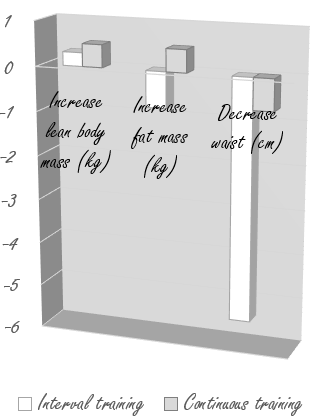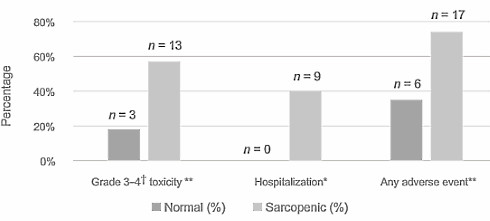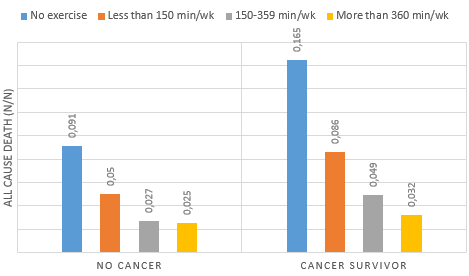|
Definition: "An ergogenic aid is any substance or phenomenon that enhances performance "
|
|
||||||||
28.02.2018 |
|
|
Interval training for cancer survivors
People who have survived cancer have an increased risk of diabetes and cardiovascular disease. Physical exercise can prevent diabetes and cardiovascular disease, and at the same time prevent cancer recurrence. Too bad that many cancer survivors dislike exercise. According to Australian sports scientists at the University of Canberra, for his group interval training may be an interesting option. Interval training doesn't take much time - and it's effective.
Study
One group, the control group, did nothing at all.
Another group exercised 3 times a week for 30 minutes during 12 weeks. These subjects warmed up for 5 minutes, and then cycled for 20 minutes with an intensity of 55 percent of their maximal oxygen uptake. The last 5 minutes of the session consisted of a cool-down.
The subjects of yet another group exercised 3 times a week for 30 minutes during 12 weeks as well. Just like the other experimental group, their workouts started with a warm-up of 5 minutes, and ended with a cool-down of 5 minutes. The core of their training consisted of 7 series of 30 seconds of cycling with an intensity of 85 percent of their maximum oxygen intake. Between the series, the subjects rested for 1 minute.
Results
The researchers tested the effect of the training on the cardiorespiratory fitness levels with the sit-to-stand test: they made their subjects rise up from a chair 5 times in a row without using the handrails. You can see below that both training types decreased the time that the test subjects needed for this.
Another test the Australians used was the six-minute walk test, which implies that subjects have to walk as many meters as possible within a 6-minute period. Both training types increased that distance.
Finally, the researchers asked their subjects about the quality of life. Both training types improved the scores. You see below the effect on the physical wellbeing, one of the dimensions of the quality of life.
Conclusion
"The low volume high-intensity interval training protocol improved fitness and functional capacity and decreased waist circumference compared with continuous low to moderate-intensity training. Both low volume high-intensity interval training and continuous low to moderate-intensity training improved the quality of life. Low volume high-intensity interval training may be an effective alternative to traditional exercise prescription within this population."
"The benefit of low volume high-intensity interval training is that for selected variables it produces more pronounced results compared with continuous low to moderate-intensity training and it is short in duration which could entice more cancer survivors to participate in exercise as time is a barrier."
"Additional research is required to fully understand the mechanisms involved in the changes identified in this study in relation to different doses of exercise. This research would be highly beneficial to assist clinicians in the optimisation of clinical exercise recommendations for cancer survivors."
Source: More: Archives:
|
|
||||||||||||||||







